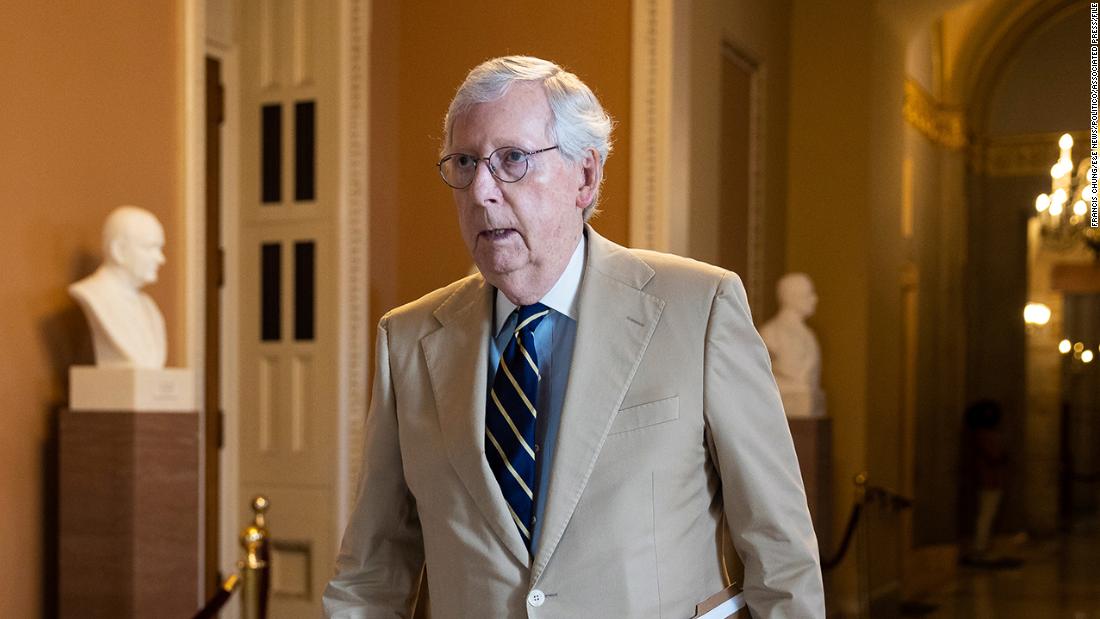
McConnell’s comments are where we begin our roundup of the news of the week that was.
Democrats’ chances of holding the Senate didn’t look so great when 2022 began. They weren’t in as bad of shape as they were in the House (as is still the case), but they were clear underdogs.
In other words, McConnell seems to be exactly right.
The results were especially noteworthy because in all those polls, Biden was underwater in his net favorability rating (favorable minus unfavorable).
The reason Democrats were ahead in both states was in large part because the Republican candidates were also underwater. Masters’ net favorability rating was -4 points, while Johnson’s were -6 and -9 points in the Fox and Marquette polls respectively.
The Democratic candidates in both states, on the other hand, had positive net favorability ratings.
These aren’t the only purple states where we see the phenomenon of Democratic candidates being relatively popular, while Biden and Republican Senate candidates are unpopular. The same is true in Georgia and Pennsylvania, which Biden won by about a point or less in 2020 and that Trump took in 2016.
The cause, again, was unpopular Republican candidates. Walker’s net favorability rating was -5 points, while Oz’s was -20 points. The Democratic nominees in both states had positive net favorability ratings, which made up for the fact that Biden was underwater in his net favorability rating in both states.
If anything, it seems like Republicans are the ones who are fighting off challengers in unexpected territory. A super PAC with ties to McConnell just had to reserve $28 million in advertising in Ohio, a state Trump won by 8 points in 2020. The polls there have been surprisingly close.
Democrats would more than welcome that pattern in 2022.
Facebook faces a youth revolt
One group of Americans who won’t be voting in this year’s midterms are teenagers under the age of 18. They represent, however, the pool of potential future voters and reaching them will be important to both political parties.
In a rather stunning development for this millennial, Facebook’s popularity with teenagers has plummeted. According to the Pew poll, just 32% of 13-17-year-olds use Facebook. That’s down from 71% in a 2014-2015 poll.
A big problem for Facebook is that it seems to not be addictive enough. Only 10% of teens say they check Facebook multiple times a day.
Compare that to the most popular social media sites: Snapchat, Instagram (owned by Facebook), Tiktok and YouTube. Multiple site or app visits per day ranged from 37% for Instagram to 60% for YouTube.
All of these sites and apps are known for letting you quickly scan many pictures and videos. While Facebook has many of those characteristics, it can have a lot of writing on it too.
Not surprisingly, the most addictive sites are the most popular social media sites and apps as well. Almost all teens in the country (95%) say they use YouTube at least a little bit. TikTok comes in second at 67%. Snapchat and Instagram come in third and fourth. Since 2014-2015, both Snapchat (41% to 59%) and Instagram (52% to 62%) have seen growth among teenagers.
The bottom line is that the once cool kid on the block may have turned old and uncool like a lot of us.
For your brief encounters: National Senior Citizens Day!
Speaking of older Americans, Sunday marks a day to celebrate the young at heart among us. And for those younger than 65, realize that you too will hopefully grow to be that old.
